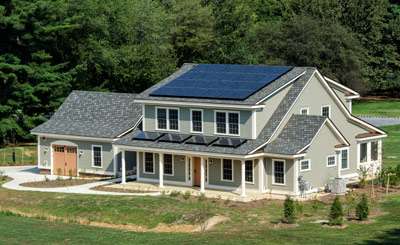New report identifies strategies to achieve net-zero energy homes

Chances are you know how many miles your car logs for each gallon or tankful of gas, but you probably have only a foggy idea of how much energy your house consumes, even though home energy expenditures often account for a larger share of the household budget.
This disparity in useful energy data is just one of several information gaps that must be bridged as the United States transitions towards residences that generate as much energy as they use over the course of a year—so-called net-zero houses.
Gaps—and strategies to overcome them—are summarized in Strategies to Achieve Net-Zero Energy Homes: A Framework for Future Guidelines, a new publication from the National Institute of Standards and Technology (NIST) based on the discussions at a 2011 workshop convened by the agency.
One such strategy, proffered by experts who attended the workshop, is to require that energy costs be listed in all real-estate transactions.
"This means incorporating energy in the appraisal process, and the valuation of principal, interest, taxes, and insurance (PITI), so that it incorporates energy cost considerations to become the valuation of principal, interest, taxes, insurance, and energy cost considerations (PITIE)," the report says.
The report breaks out three categories of challenges: design, technology and equipment, and the needs and behaviors of homeowners and the building industry.
With regard to design, one workshop recommendation is to establish a scoring system for new and used homes so that prospective buyers can "compare energy, durability, indoor air quality, accessibility, and other factors relative to their needs."
In net-zero energy homes, energy loads will be substantially lower than current heating and cooling equipment is built to deliver and existing product performance standards are designed to test. According to the report, manufacturers will need new guidelines and underlying data that will help them size their equipment offerings appropriately and align performance with the conditions and requirements of net-zero energy homes.
The behaviors and requirements of homeowners and builders may provide the most complex set of challenges. One clear need, the report says, is to help designers, builders and occupants understand how best to collect and analyze home energy data.
"Consumers require information that is useful, timely and understandable to be able to make the energy purchase and consumption decisions necessary to achieve net-zero energy for new and existing homes," the report says.
More information: McNabb, N. Strategies to Achieve Net-Zero Energy Homes: A Framework for Future Guidelines Workshop Summary Report. NIST Special Publication 1140, April 2013. dx.doi.org/10.6028/NIST.SP.1140
Provided by National Institute of Standards and Technology

















